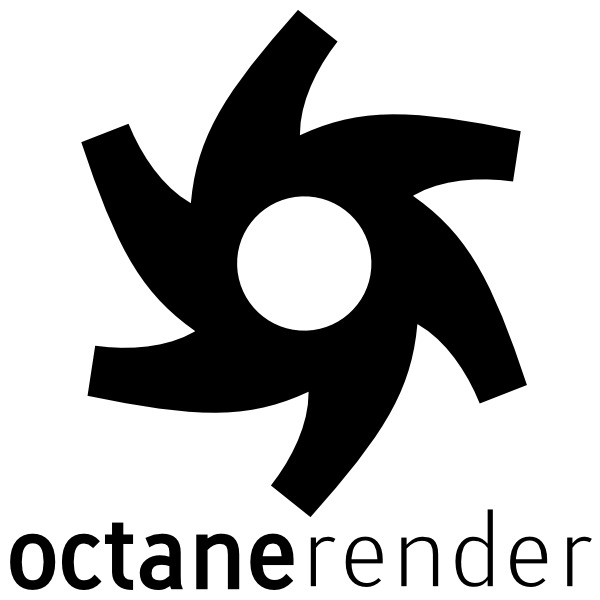Table of Contents
Introduction
OctaneRender, from OTOY, is a real-time, physically correct 3D rendering engine that uses GPUs instead of CPUs for processing. This is a relatively new approach, as traditional graphics rendering was done on CPUs instead. Graphics processors are ideal for highly parallel tasks like rendering, though, and it is easier to fit multiple video cards in a single computer than multiple CPUs.
OctaneBench, the free benchmark for OctaneRender, was recently updated to version 4.00. While this does not yet have support for the new features in NVIDIA's RTX series of graphics cards, it does bring a performance boost compared to previous versions. As such, we thought it was time to do a round-up of GeForce and Titan cards from the last two generations.
Test Setup
For our test platform this time around, we wanted to use what we recommend to folks looking for a multi-GPU rendering workstation. That means a board and processor capable of running four video cards, with high clock speed being a bigger factor that core count – and also minimizing the cost of the CPU, so that funds can be focused on getting the most powerful GPUs instead. That combination leads naturally to a Xeon W based system, with the quad-core Xeon W-2125, ECC memory, and a fast SSD to avoid potential bottlenecks.
If you would like full details on the hardware configuration we used for this round of testing, just click here to expand a detailed list.
| Testing Hardware | |
| Motherboard: | Gigabyte MW51-HP0 |
| CPU: | Intel Xeon W-2125 4.0GHz (4.5GHz Turbo) 4 Core |
| RAM: | 8x Kingston DDR4-2666 16GB ECC Reg (128GB total) |
| GPU: | NVIDIA GeForce GTX 1070 Ti 8GB NVIDIA GeForce GTX 1080 Ti 11GB NVIDIA Titan Xp 12GB NVIDIA Titan V 12GB NVIDIA GeForce RTX 2070 8GB NVIDIA GeForce RTX 2080 8GB NVIDIA GeForce RTX 2080 Ti 11GB NVIDIA Titan RTX 24GB |
| Hard Drive: | Samsung 960 Pro 1TB M.2 PCI-E x4 NVMe SSD |
| OS: | Windows 10 Pro 64-bit |
| PSU: | EVGA 1600W P2 |
| Software: | OctaneBench 4.00 |
Benchmark Results
Here are the OctaneBench 4.00 scores for each of the GPUs we tested, sorted from fastest to slowest and with the RTX series cards highlighted in darker green:
And here is another way of looking at the results, as percentages relative to the GeForce GTX 1080 Ti's performance:
Analysis
The new Titan RTX didn't unseat the Titan V for OctaneRender's top performance spot, but it is a little faster than the RTX 2080 Ti and has twice the video memory of either of those cards. That massive VRAM capacity seems tempting, especially for folks rendering large, complex scenes – but there is a caveat. While the Titan RTX offers solid GPU-based rendering performance as a single card, it is limited to one or maybe two cards at most in a single workstation.
Why is that? NVIDIA started using dual-fan coolers on their RTX series (both GeForce and this Titan model). Using dual fans means a single card stays cooler and quieter than a more traditional, single-fan design – but it also means greatly increased heat within the computer, which is compounded with each additional card. Most systems can handle the heat from one GPU, and some can handle two with high airflow fans and ample space between the two cards, but beyond that there is just too much heat inside and the fans on the video cards start recycling that hot air which can no longer properly cool the cards – leading to overheating and throttling. Unfortunately, it looks like the Titan RTX is only built by NVIDIA directly… meaning there are no 3rd party models with different cooling layouts.
What Are the Best GPUs for OctaneRender?
NVIDIA's Titan V is still the fastest card that can be effectively used in multi-GPU workstations for OctaneRender 4. The newer Titan RTX does have more video memory, and costs less, but it is crippled by its dual-fan cooling layout and unsuitable for multi-GPU.
The RTX 2080 Ti is not far behind, though, and costs far less than either Titan – so those are probably the best option right now, as long as you use single-fan models. If you need more video memory, to rival the 24GB that comes on the Titan RTX, NVIDIA's Quadro RTX 6000 should have similar performance and is equipped with the right type of cooler… but also substantially more expensive.
Puget Systems offers a range of powerful and reliable systems that are tailor-made for your unique workflow.

